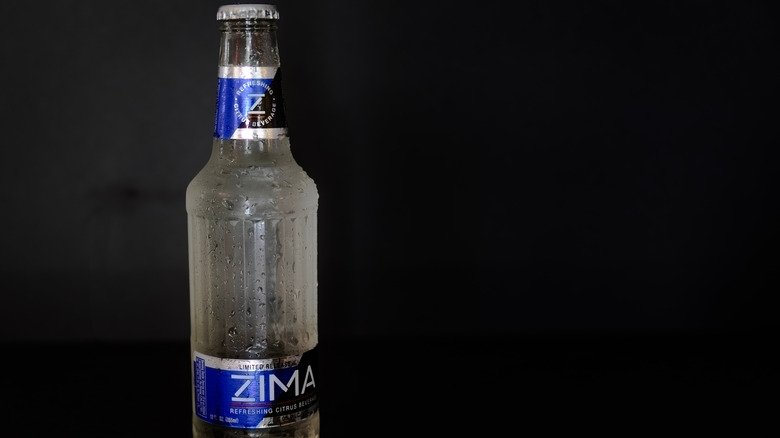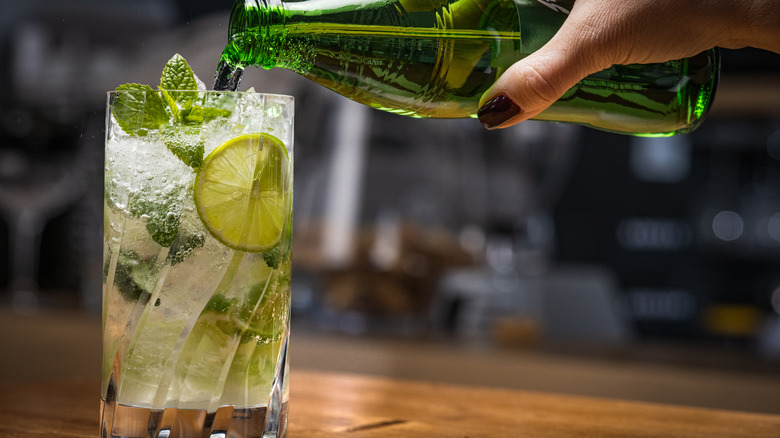The Boozy Difference Between Zima, The First Hard Seltzer, And White Claw
When White Claw hit the shelves in 2016, so many of us finally had our low-carb, pre-mixed, and perfect-for-day-drinking dreams answered. And more than that, we asked what we ever did before the world of hard seltzers. But before White Claw, and in fact, before even the soft stuff like La Croix, there was Zima. Mostly left to alcohol lore, Zima was once a hugely popular drink, hitting its peak in the 1990s, then being revamped in 2017 only to be completely discontinued in the United States a year after its limited release. Zima was largely mocked and degraded, usually on the butt of jokes rather than charming memes and catchphrases like "No laws when you're drinking Claws." So you may think that the two lowish-alcohol and fruity non-beers have nothing in common. But that's sort of not true.
Both Zima and White Claw are, in fact, malted beverages. Because of its comparable taste, many folks assume White Claw has hard liquor like vodka added to it, but its booze is instead distilled from fermented sugar, just like beer (without the hops). Zima, on the other hand, didn't have its own unique fermenting process; its parent company Coors would actually just filter down its low-quality lager until the flavor was nearly undetectable, and the liquid turned clear, rather, like hard seltzer. These differences in booze creation are also what makes White Claw gluten-free, while Zima was not.
So how does it impact taste?
While some of us weren't lucky enough to try Zima before its ultimate demise in the United States, plenty of Mashed writers did. They described it as tasting a lot like Sprite, or any lemon-lime soda. On the other hand, White Claw is much more similar in taste to lightly flavored seltzers such as La Croix, the flavor of which has been described "like it was made by a society in which flavor is the scarcest natural resource" by one Twitter user. That's thanks in part to a long and more complicated story of popular culture turning its nose up at sugary soft drinks and artificial flavorings. So, in short, Zima tasted more like boozy soda pop, while White Claw stays truer to its seltzer origins.
Zima did contain a whopping 21 grams of sugar per bottle, totaling nearly 200 calories. White Claw boasts just two meager grams of sugar per can and only 100 calories. Zima tasting considerably sweeter is no real surprise.

